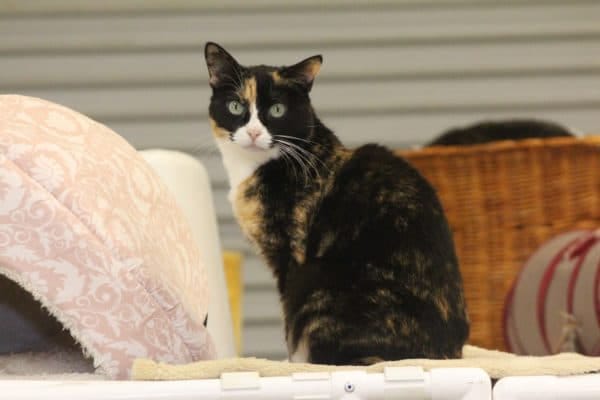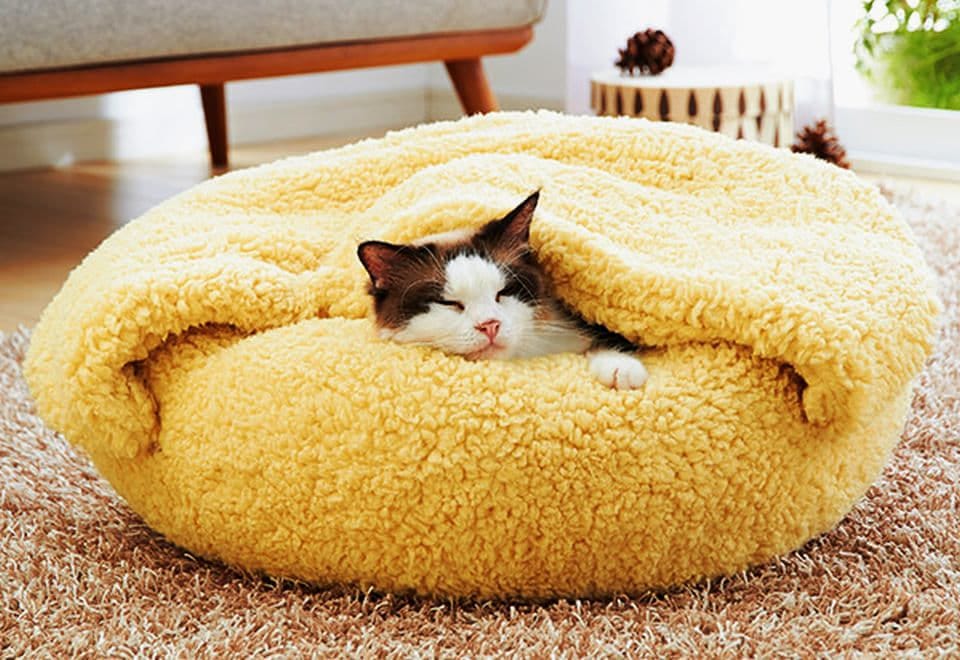You’ve chosen the kitten or cat you prefer. What needs to be prepared? How can you make sure you’ll make a good owner?

The best way to ensure your cat’s wellbeing is to understand the demands of the species and use that knowledge to build a suitable habitat. Even though some of the crucial elements are rather simple, owners usually ignore them.
Sometimes it can be easy to confuse what cats might desire with what we might want. However, cats are not persons. As you begin to think like a cat, other things will begin to make more sense, and you’ll begin to see your cat and its actions in a whole different perspective. Knowing what your new cat or kitten needs will make it easier for you to welcome it.
One thing we as owners must realize is that the majority of cats respect their habitat much more than the people that reside there.
It is important for a cat’s owner to understand how its environment affects it and provide security for it; this will always deepen the link between cats and people.
A safe space
Despite the fact that we often consider cats to be “domesticated,” we are actually merely toying with a species that evolved from a lonely animal over millions of years. No matter how big or small you are, as a cat, your natural impulse is to clear an area of the terrain that will have enough wildlife to feed both you and, if you are female, your kittens. This is accurate unless you’re a lion or a member of a related species still being raised by your mother. You don’t want another cat to plunder your pantry once you’ve finished doing this. You’re obviously very protective of your territory because it’s a matter of life or death. A wild cat, also referred to as a feral cat (a domestic cat that lives in the wild without human intervention), will have a large area to roam, a smaller area that it will tenaciously defend, and a little den where it feels safe. A female cat gives birth to her kittens in the den. Regardless of whether they are spayed or neutered, well-cared-for pets, or wild cats (most domestic cats could still survive in the wild if necessary), that urge still affects our cats (most pet cats could also survive in the wild if they had to).
Think about the safe sanctuary our cats have in the place we call home. Both of us and they could sense their safety inside. Although the cat’s litter box is in a conservatory, we might be unaware that another cat is “visiting” through the cat flap or an open window, or that it is upsetting the peace by gazing through the glass windows. Perhaps the nearby cat is standing guard outside the cat flap, ready to pounce on your cat as it emerges. These elements could all contribute to your indoor cat feeling rather scared and anxious.
Knowing the significance of these things allows you to take preventative measures, such as positioning the litter box in a secure location and barring other cats from entering, to make sure your cat feels comfortable. If you offer the cat a way in and out of the house using a cat door or catflap, giving it a “key” on its collar using a magnet, a microchip, or an electrical device so that it can open its own cat flap but other cats can’t get in would ensure security. When they don’t have a cat door, some people just let the cat in and out as needed.

What facilities would my cat or kitten require?
We are all aware that a cat needs food, drink, and a litter box if it stays inside or stays away from the outside. But it’s a little bit more complicated than that. The cat’s food, drink, and litter box are typically arranged in a line so that they are simple for the cat to locate and use. What about that is wrong? If given the choice, a cat will undoubtedly choose to drink away from its consumption area and will undoubtedly eat and drink away from its bathroom. It is necessary to comprehend the necessity of splitting these vital resources in order to comprehend a cat.
The following things are required:
A pan, tray, or urinal
What to look for when choosing a cat’s litter box, litter, and littering area.
A cozy bed
The placement of a bed can either encourage or dissuade a cat from using it, regardless of its design, size, or substance. Because they can see what is below them and are not concerned with what is above them, cats prefer to be higher up. Although there are many choices, your own bed will likely be your first choice.

Secure areas
Cats need high places in homes where they can retreat, retire, take a nap in safety and privacy, or flee from a visitor or household activity (person or dog). For more stressed cats, having a space to relax can be a blessing. Additionally, cats love to hide in warm, comfortable beds, especially when they are feeling a little uneasy. Cats must be able to conceal themselves in secluded spaces so they can run from any potential dangers. When a cat decides to hide, their owners must accept that decision and not bother them.
Litter box
If you’re acquiring a kitten, a pen for them can literally save their lives. One is available to buy, rent, or borrow. Use a dog cage that people store in their car trunks or one of the particularly designed kitten or puppy enclosures, which are roughly 1 m x 0.75 m x 0.75 m in size.
Transporting package
Essential for bringing your new cat home, as well as for visits to the vet or cattery. If you haven’t lived with a kitten for a while, you might forget how they get into everything and how their curiosity sometimes puts them in danger. If you can secure them in the pen while you leave the house or at night, you may be sure they won’t cause trouble for themselves. Regardless of whether you have dogs, other cats, or young children, the pen gives kittens some time alone because they really need a lot of sleep. They pick up cuddling up quickly because they feel safe doing it on their end. Additionally, it is a fantastic way to introduce kittens to dogs, cats, and children so that the animals can get acclimated to it and the kitten is safe. For a bed, a litter box, food, and water, there is room inside. There are many different designs, but the most important thing is to choose one that the cat can enter and depart safely.
Toys
Cats love to play, and anything from a piece of paper to a designated cat play area might be the starting point. It’s a great way to engage with your cat and encourage it to express its energy and instincts. However, problems could occur if cat owners mistreat their animals.

RELATED: Playing with your cat
Identity has importance
Especially if your cat likes to go outside. According to International Cat Care, all cats should be microchipped, but you might also wish your cat to wear a collar for obvious identification or to have a “key” to the cat flap.
RELATED: Identifying your cat
RELATED: How to choose and fit a collar for the cat
“Cat flap”
The creation of the cat flap has completely changed the way people care for their feline friends because it allows the cat to have unrestricted access to the outside without leaving a door or window open, keeping the house secure and eliminating the need for the cat to wait outside before being let inside. Simple flaps that can frequently also be locked in or out, flaps that are locked until released by a magnet or an electronic key on the cat’s collar, and cat flaps that are triggered by the cat’s microchip are just a few of the several sorts of flaps that are already widely accessible (or can be programmed for several microchips should you have several cats). In areas with a high cat population, International Cat Care advises choosing a cat flap or door that can prevent stray cats from entering the residence.
RELATED: How to choose and use a cat flap for your cat
Scratched post
To mark its territory, a cat will naturally sharpen its claws and scratch. While most cats prefer to do this outside, some may also choose to do it indoors. The cat won’t scratch the furniture because it will have a place to do it on a scratch post.
Safeguarding your pet
If you have never had a kitten in the house, it would be a good idea to conduct a quick evaluation to find any potential danger locations (or if it has been a while). A lot of things can poison cats, some things can burn their paws or skin, and some things should be avoided. It is advised to remove hazardous plants and chemicals and to look around to make sure that there aren’t any small objects, such as needles and thread, lying around.
- Hazards to kittens and cats in the home
- Cats and poisons
- Cats and poisonous plants
Now you’re ready to meet your new kitten or cat! Bring your cat carrier rather than leaving your brand-new kitten unattended in the car.
READ NEXT: The Origins Of Cats

